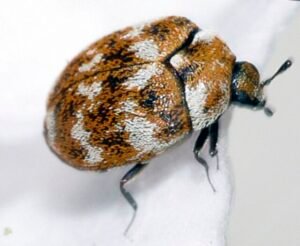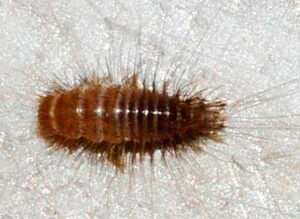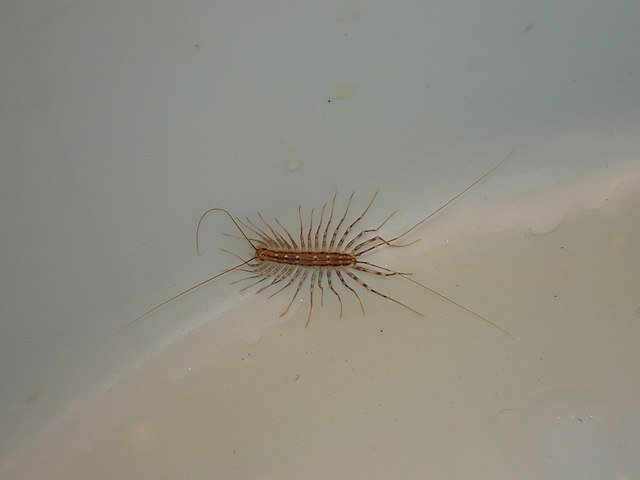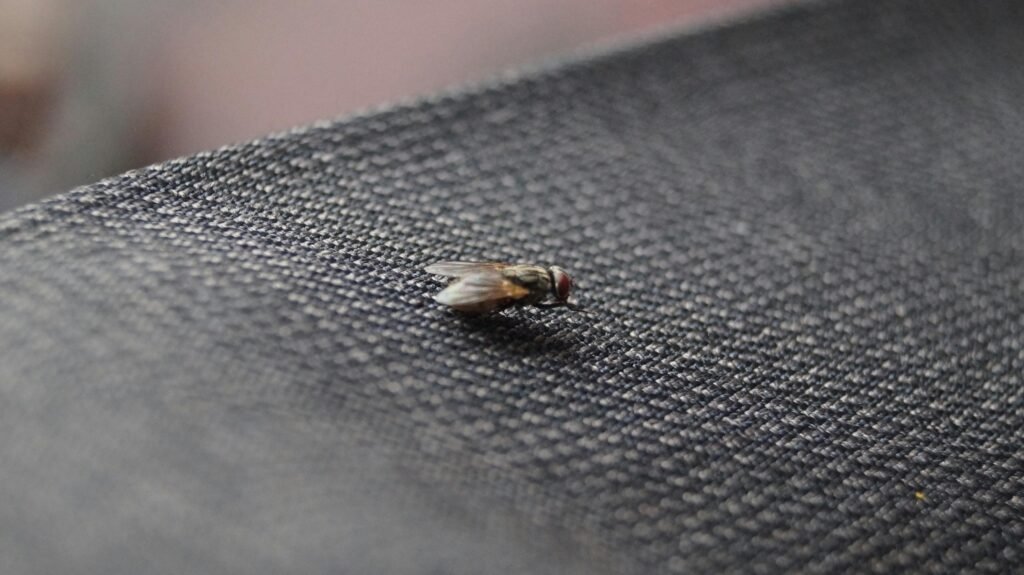Carpet Beetles (Dermestidae): Identification, Damage, and Professional Control
 Carpet beetles (Dermestidae) are one of the most underestimated household pests. People often think they’re harmless or confuse them with clothes moths (Tineola bisselliella) because both attack fabrics, wool, and natural fibers. But while moths chew through garments, carpet beetle larvae silently destroy carpets, furniture, and even stored collections.
Carpet beetles (Dermestidae) are one of the most underestimated household pests. People often think they’re harmless or confuse them with clothes moths (Tineola bisselliella) because both attack fabrics, wool, and natural fibers. But while moths chew through garments, carpet beetle larvae silently destroy carpets, furniture, and even stored collections.
As a pest control professional, I’ve seen many homes where people blamed silverfish (Lepisma saccharina) or pantry beetles (Tribolium castaneum) for strange damage on fabrics and carpets—only to discover later that carpet beetle larvae were the hidden cause. Unlike cockroaches or ants, these insects don’t need food scraps; they live off animal-based materials such as wool, fur, feathers, and dead insects.
Their adults are small, round, and often found near windows, while the larvae are brown, hairy, and do all the damage. Most infestations begin unnoticed—in stored clothes, under rugs, or in air vents—and by the time the damage appears, hundreds of larvae may already be feeding.
In this guide, I’ll explain how to identify carpet beetles, understand their biology, and apply both DIY and professional pest control methods to eliminate them effectively, no matter where you live—whether it’s a small apartment in Europe or a large house in North America.
Identification
Carpet beetles belong to the family Dermestidae, which includes several common species:
Varied Carpet Beetle (Anthrenus verbasci)
Round body with mottled black, white, and yellow scales.Black Carpet Beetle (Attagenus unicolor)
Shiny black adults; larvae are brown and elongated with tufted hairs.Furniture Carpet Beetle (Anthrenus flavipes)
Similar in shape but with yellow and white patterns.
Size: Adults are tiny—about 2–4 mm long.
Shape: Oval or round.
Color: Patterned or dark depending on the species.
Larvae: Fuzzy, brown, and slow-moving, with visible bristles at the tail end.
Field Tip: If you see shed larval skins or small holes in wool fabrics, carpets, or stored clothes, suspect carpet beetles rather than moths.
Biology and Ecology
 Carpet beetles go through a complete metamorphosis: egg, larva, pupa, and adult.
Carpet beetles go through a complete metamorphosis: egg, larva, pupa, and adult.
Eggs: Tiny white eggs are laid on or near organic materials such as wool, fur, feathers, and lint.
Larvae: This is the damaging stage. Larvae feed for weeks or months depending on conditions.
Pupae: Pupation occurs in hidden areas such as under furniture or baseboards.
Adults: Feed mainly on pollen and nectar and are often found near windows.
Lifecycle duration: Usually 6–12 months, but in cool conditions larvae can survive for over a year without feeding—making them especially persistent.
Preferred environment: Dark, undisturbed areas with natural fibers—under rugs, inside closets, in upholstered furniture, or air ducts containing lint or dead insects.
Global Distribution
Carpet beetles are found worldwide—indoors and outdoors.
In North America and Europe, they are among the most common textile pests.
In Australia, they infest stored wool and museum collections.
In Asia, they can affect textile industries and storage facilities.
They enter homes through open windows, cut flowers, bird nests, or contaminated items such as wool rugs or second-hand furniture.
Risks and Damage
Carpet beetles don’t bite or sting, but their larvae can cause serious material and economic damage.
Damage to Household Items
Wool, silk, felt, fur, and feathers.
Upholstery and carpet backing.
Stored clothing, blankets, and leather goods.
Taxidermy, museum collections, and natural fibers.
Larval feeding leaves irregular holes, bald spots, and loose fibers. Sometimes, they damage synthetic materials if these contain organic contaminants like sweat, hair, or food stains.
Health Concerns
While they don’t transmit diseases, the larval hairs can cause mild allergic reactions, especially skin irritation or respiratory discomfort in sensitive individuals.
Commercial Impact
In hotels, museums, or textile stores, infestations can harm reputation and require professional treatment and preventive maintenance.
Signs of Infestation
Shed larval skins (brown, papery).
Holes in wool garments or carpets.
Fine dust or frass (insect droppings) under fabrics.
Adults clustering on windowsills (trying to get outside).
Dead beetles near light sources.
Use a flashlight to inspect under rugs, behind furniture, and inside closets. Don’t forget air vents and attics—carpet beetles love undisturbed lint.
Control Methods
1. Inspection and Identification
The first step is locating the infestation source. Common spots include:
Stored clothing boxes.
Air ducts and vents.
Bird or rodent nests near attics or chimneys.
Pet bedding and wool rugs.
Identifying the correct species helps tailor the control method.
2. Cleaning and Sanitation
Vacuuming is the cornerstone of control:
Vacuum carpets, upholstery, and baseboards thoroughly.
Dispose of vacuum bags immediately outside the home.
Wash fabrics in hot water (>50°C) or dry-clean.
Remove old spider webs, dead insects, and bird nests.
3. Physical and Mechanical Measures
Steam cleaning carpets kills larvae and eggs.
Freezing infested items for 48 hours can eliminate pests.
Heat treatment (above 55°C) works for delicate or museum materials.
4. Chemical Control
In persistent infestations, insecticides may be necessary:
Use residual sprays containing pyrethroids on cracks, edges, and under rugs.
Insect growth regulators (IGRs) such as hydroprene disrupt the larval cycle.
Always follow label directions strictly.
If infestation sources are hidden (e.g., behind wall panels or ducts), professional pest control treatment is recommended.
5. Biological Control
Some natural enemies include:
Parasitic wasps (Laelius pedatus) that attack beetle larvae.
Predatory mites in storage facilities.
These are rarely used in households but are valuable in museums and stored product protection.
Advanced Approaches
Integrated Pest Management (IPM)
I always advise clients to treat carpet beetles as a long-term problem, not a one-time event. An IPM plan includes:
Monitoring with pheromone or sticky traps.
Periodic inspections (especially before and after storage).
Combining physical cleaning, sealing of entry points, and selective insecticide use.
Professional Control
For large facilities or recurring infestations:
Licensed professionals can perform deep inspections using UV traps and endoscopes.
Heat and fumigation treatments may be applied under strict safety conditions.
Preventive maintenance programs keep infestations from returning.
Cultural and Historical Context
Carpet beetles have been recognized since the early days of textile production.
In ancient times, damage to wool and furs was often blamed on “cloth moths,” but scientists later identified dermestid beetles as major culprits.
Museums worldwide still battle these pests—especially in collections of animal skins, stuffed birds, and antique carpets. The British Museum and Smithsonian Institution use climate-controlled rooms and pheromone traps to protect valuable exhibits.
FAQ Section
Q1: Do carpet beetles bite humans?
A: No. They don’t bite or sting. Skin irritation usually comes from larval hairs, not from actual bites.
Q2: What causes carpet beetle infestations?
A: Natural fibers, dust, lint, pet hair, and old bird nests attract them. Poor cleaning and clutter help them multiply.
Q3: Are carpet beetles the same as clothes moths?
A: Are carpet beetles the same as clothes moths?
No. Clothes moths are small winged insects that look like miniature butterflies, while carpet beetles are round, hard-bodied beetles. Both can fly, but carpet beetles usually crawl more than they fly. They also differ completely in appearance, life cycle, and control methods. Both feed on natural fibers such as wool, silk, and fur, but effective treatment for each pest requires a different approach.
Q4: Can I remove carpet beetles naturally?
A: Yes, to some extent. Vacuuming, steam cleaning, and freezing infested fabrics can control light infestations.
Q5: Why do I see adult beetles near windows?
A: Adults are attracted to light. They often appear on windowsills when emerging from hidden larval habitats indoors.
Q6: Should I call a professional exterminator?
A: If you find multiple larvae or recurring damage, yes. Professionals can identify breeding sites and apply safe residual treatments to eliminate all stages.
Final Thoughts
From all the household pests I’ve treated, carpet beetles (Dermestidae) are among the most deceptive. They don’t make noise, they don’t crawl on your skin, and they don’t leave droppings like cockroaches or mice. But while you sleep, their larvae quietly chew through your favorite wool sweater or the carpet under your couch.
If you see small round beetles on your window or strange holes in fabrics, don’t underestimate it. The problem is rarely where you see the adults—it’s hidden in dark corners, baseboards, or behind stored clothes.
In my experience, a full control plan must include:
Deep vacuuming and cleaning of all fiber materials.
Laundry or dry-cleaning all natural fabrics.
Inspection of air ducts, pet bedding, and closets.
Residual insecticide treatments in cracks and edges.
Professional help if the problem repeats after cleaning.
Homeowners can manage light infestations with regular cleaning, steam, or freezing methods. But for large or recurring infestations, it’s better to call a licensed pest control technician who can apply the right chemicals where the carpet beetles hide—in wall gaps, furniture seams, or behind insulation.
Don’t wait until the damage becomes visible everywhere. The earlier you act, the less you’ll lose.
Disclaimer
This article is for informational purposes only. Pest control laws and approved chemicals vary by country. For best results and legal safety, we strongly recommend contacting a licensed pest control professional in your local area. Always make sure that the pest control technician is properly certified or licensed, depending on your country’s regulations. It’s important to confirm that they only use approved products and apply them exactly as instructed on the product label. In most places in Europe, UK, or USA, following label directions is not just best practice—it’s the law.
Author
Nasos Iliopoulos
BSc Agronomist & Certified Pest Control Expert
Scientific Director – Advance Services (Athens, Greece)
Licensed Pest Control Business – Ministry of Rural Development & Food (GR)
References
Penn University - Black Carpet Beetle
University of Maryland - Carpet Beetles
University of California - Carpet Beetles


